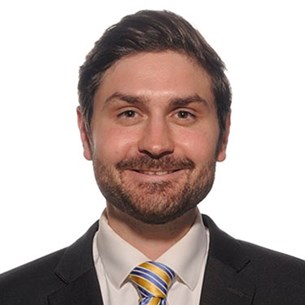Meeting
2022 ASCO Annual Meeting

The Sidney Kimmel Comprehensive Cancer Center at Johns Hopkins, Baltimore, MD
Cole Harris Sterling , Michael Sang Hughes , Hua-Ling Tsai , Ephraim Joseph Fuchs , Kathryn Yarkony , Ravi Varadhan , Douglas Edward Gladstone , Lode J. Swinnen , Richard J. Jones , Nina D. Wagner-Johnston , Richard F. Ambinder
Background: The use of PTCy for graft-versus host-disease (GVHD) prophylaxis has revolutionized alloBMT, but there is limited published experience in PTCL. Methods: All patients with PTCL who received a non-myeloablative alloBMT using PTCy-based GVHD prophylaxis between January 2004 and December 2020 at Johns Hopkins Hospital were analyzed. Standard population statistics were used. Results: Sixty-five patients were identified. The median age was 59 years (range, 24-75 years). Lymphoma histology included PTCL-not otherwise specified (n=24), ALK-negative anaplastic large cell lymphoma (n=14), angioimmunoblastic T-cell lymphoma (n=7), enteropathy-associated T-cell lymphoma (n=6), hepatosplenic T-cell lymphoma (n=4), and other (n=10). Eleven patients were in first complete remission (CR1, 17%). The remaining patients were in first partial remission (PR1) or underwent salvage therapy to at least PR prior to transplant. Forty-eight patients received an alloBMT from a haploidentical related donor (74%), 10 from a fully matched donor (15%), and 7 from a mismatched unrelated donor (mMUD, 11%). All patients received non-myeloablative conditioning with fludarabine, cyclophosphamide, and TBI. The graft source was bone marrow (BM) in the first 46 patients (71%). Because of relatively high relapse rates, in 2018 we began using PB and increased TBI from 200 to 400 cGy; the remaining 19 patients (29%) received this regimen. GVHD prophylaxis was PTCy, mycophenolate mofetil, and a calcineurin inhibitor or sirolimus. With a median follow up of 2.8 years, the 3-year progression-free survival (PFS) for the entire cohort was 39% (95% confidence interval [CI] 28-54%), and the 3-year overall survival (OS) was 43% (95% CI 31-58%). The cumulative incidence (CuI) of relapse and non-relapse mortality (NRM) at 1 year was 25% (95% CI 14-35%) and 12% (95% CI 4-20%), respectively. Among 29 cases of GVHD (45%), 2 were grade 3-4 acute GVHD (3%) and 3 were severe chronic GVHD (5%). Univariate analysis including age, histology, mMUD, PB/400cGy, and CR1 revealed only PB/400 cGy TBI as a significant predictor of survival, relapse, or NRM. Outcomes by source. Conclusions: AlloBMT with non-myeloablative conditioning and PTCy is safe and well-tolerated in patients with PTCL. Our preliminary data suggest increasing TBI dose to 400 cGy and using PB allografts may offer improved disease control and better survival outcomes, though additional studies are needed to confirm these findings.
| 3-yr PFS | 3-yr OS | 1-yr CuI relapse | 1-yr CuI NRM | |
|---|---|---|---|---|
| BM/200cGy TBI | 30% (95% CI 19-47%) | 34% (95% CI 22-51%) | 33% (95% CI 19-46%) | 11% (95% CI 2-20%) |
| PB/400cGy TBI | 66% (95% CI 43-100%) | 70% (95% CI 47-100%) | 5% (95% CI 0-16%) | 16% (95% CI 0-33%) |
| p-value | 0.035 | 0.043 | 0.012 | 0.600 |
Disclaimer
This material on this page is ©2024 American Society of Clinical Oncology, all rights reserved. Licensing available upon request. For more information, please contact licensing@asco.org
2022 ASCO Annual Meeting
Poster Session
Hematologic Malignancies—Leukemia, Myelodysplastic Syndromes, and Allotransplant
Hematologic Malignancies
Allogenic Stem Cell Transplantation
J Clin Oncol 40, 2022 (suppl 16; abstr 7047)
10.1200/JCO.2022.40.16_suppl.7047
7047
278
Abstract Disclosures
2023 ASCO Annual Meeting
First Author: Selim Corbacioglu
2022 ASCO Annual Meeting
First Author: Michael Sang Hughes
2021 ASCO Annual Meeting
First Author: Peter A. Riedell
2023 ASCO Annual Meeting
First Author: Jhanelle Elaine Gray